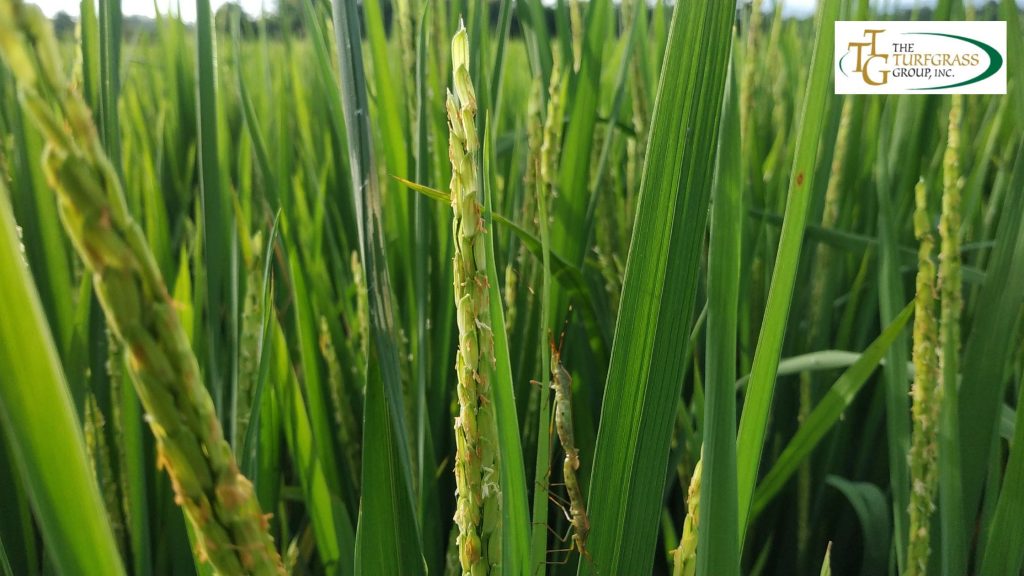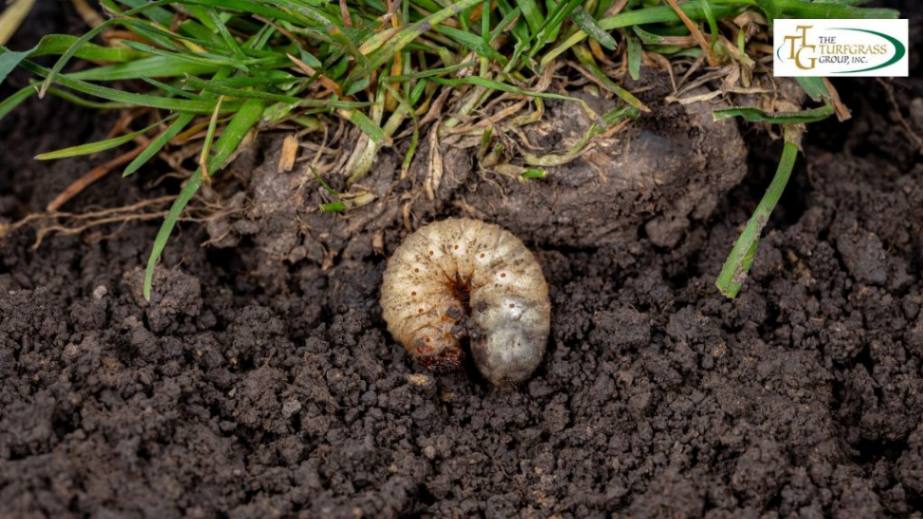
Zoysiagrass is a popular choice for lawns due to its lush appearance, durability, and low maintenance requirements.
However, like all grass varieties, Zoysiagrass is susceptible to various pests that can compromise its health and appearance.
Understanding these pests and how to manage them effectively is crucial for maintaining a vibrant and healthy lawn.
This article delves into the top five pests that commonly affect Zoysiagrass and provides practical management strategies for each.
Armyworms
Description: Armyworms are larvae of various moth species and are known for their voracious appetite.
They often appear in large numbers and can cause significant damage to Zoysiagrass.
Armyworms are typically green, brown, or gray and have distinct stripes running along their bodies.
They tend to feed on the grass blades, leading to a ragged, chewed-up appearance.
Signs of Infestation:
- Irregular patches of brown or dead grass.
- Presence of frass (insect droppings) on the lawn.
- Visible larvae during the day, especially in the early morning or late afternoon.
Management Strategies:
- Monitoring: Regularly inspect your lawn for signs of armyworm activity. Pay particular attention to the edges of the lawn and areas where the grass appears stressed.
- Biological Control: Introduce natural predators such as birds or parasitic wasps that feed on armyworms.
- Chemical Control: If the infestation is severe, use an insecticide labeled explicitly for armyworm control. For the best results, apply it during the early stages of larvae development.
- Cultural Practices: To enhance the resistance to pests of Zoysiagrass, maintain healthy, well-fertilized grass. Mowing at the appropriate height and keeping the lawn well-irrigated can also help.
Chinch Bugs
Description: Chinch bugs are small, winged insects that suck the sap from grass blades, causing them to turn yellow and eventually die.
These pests are most active in hot, dry conditions and can cause extensive damage to Zoysia Grass lawns.
They are minor black bugs with white wing covers that have a distinctive, rounded appearance.
Signs of Infestation:
- Yellowing or browning of grass patches, often starting from the edges and spreading inward.
- Presence of chinch bugs in the thatch layer of the lawn.
- Dead patches of grass that may be easily lifted due to lack of root system.
Management Strategies:
- Monitoring: Regularly check for chinch bugs by using a soap solution test. Mix a few tablespoons of liquid soap with water and pour it over a suspected area. Chinch bugs will float to the surface within a few minutes.
- Biological Control: Use beneficial nematodes, which are microscopic worms that prey on chinch bug larvae.
- Chemical Control: Apply a systemic insecticide that targets chinch bugs. Be sure to follow the application guidelines carefully to avoid harming beneficial insects and pollinators.
- Cultural Practices: Maintain proper lawn care practices, including watering deeply and infrequently, to keep your Zoysiagrass healthy and less susceptible to chinch bugs.
Grubs
Description: Grubs are the larval stage of various beetles, including Japanese beetles, June beetles, and masked chafers.

These pests feed on the roots of Zoysiagrass, leading to weakened grass that can be easily pulled up from the soil.
Grubs can cause significant damage if left unchecked.
Signs of Infestation:
- Thinning or browning of the grass, often with a spongy feel when walked on.
- Presence of white, C-shaped larvae in the soil beneath the grass.
- Increased bird activity or other predators searching for grubs in the lawn.
Management Strategies:
- Monitoring: Perform a turf inspection by lifting sections of grass and checking for grubs in the soil. This is typically done in late summer or early fall.
- Biological Control: Apply beneficial nematodes or Milky Spore disease, which targets grub larvae in the soil.
- Chemical Control: Use a grub control insecticide that is effective against the specific type of grubs affecting your lawn. Early application in late summer or early fall is often the most effective.
- Cultural Practices: Maintain a healthy lawn with proper fertilization and watering to improve root growth and reduce the impact of grubs.
Sod Webworms
Description: Sod webworms are the larvae of tiny moths that create web-like structures on the grass surface.
They feed on the grass blades, causing irregular patches of dead grass.
Sod webworms are small, caterpillar-like insects that are often green or brown with a wrinkled appearance.
Signs of Infestation:
- Irregular patches of brown or dead grass with webbing or silk threads visible.
- Presence of larvae or moths in the affected areas.
- Chewed-up grass blades and a noticeable decline in lawn health.
Management Strategies:
- Monitoring: Regularly check for sod webworms by inspecting the grass for webbing and larvae. Early detection is critical to effective control.
- Biological Control: Introduce natural predators such as birds or beneficial insects that feed on sod webworms.
- Chemical Controls: Use insecticides that are specifically labeled for sod webworm control. Apply the product according to the manufacturer’s instructions.
- Cultural Practices: Implement proper lawn maintenance practices, including regular mowing and thatch management, to reduce the likelihood of sod webworm infestations.
Billbugs
Description: Billbugs are a type of weevil that feed on the grass stems and roots of Zoysiagrass.
Adult billbugs are small beetles with distinctive elongated snouts, while their larvae are white and C-shaped. Infestations can lead to thinning grass and increased vulnerability to other pests.
Signs of Infestation:
- It is thinning or dead patches of grass with a noticeable increase in thatch.
- Presence of billbug larvae in the soil or billbug adults on the grass surface.
- Irregular, wilted patches of grass that may feel spongy underfoot.
Management Strategies:
- Monitoring: Inspect the lawn for signs of billbug damage and check for larvae in the soil. Early identification can help prevent extensive damage.
- Biological Control: Use beneficial nematodes to target billbug larvae in the soil.
- Chemical Control: Apply an insecticide labeled for billbug control, ensuring proper timing and application techniques for effective results.
- Cultural Practices: Promote lawn health through proper fertilization, watering, and thatch management to reduce the impact of billbugs.
Conclusion
Managing pests that affect Zoysiagrass requires a proactive and informed approach.
By regularly monitoring your lawn, implementing adequate biological and chemical controls, and maintaining good cultural practices, you can safeguard your Zoysiagrass from damage and ensure its lush, vibrant health.
If you need further assistance or personalized advice on managing pests in your lawn, don’t hesitate to reach out to our experts.
Contact us today at The Turfgrass Group to get professional help and keep your Zoysia Grass in top condition.
FAQs
What are the signs of an armyworm infestation in Zoysiagrass?
Answer: Signs of an armyworm infestation include irregular patches of brown or dead grass, frass (insect droppings) on the lawn, and visible larvae during the day, especially in the early morning or late afternoon.
How can I effectively manage armyworms in my Zoysia Grass lawn?
To manage armyworms:
- Monitoring: Regularly inspect your lawn, especially edges and stressed areas.
- Biological Control: Introduce natural predators such as birds or parasitic wasps.
- Chemical Control: Use an insecticide labeled for armyworm control, applied early in larvae development.
- Cultural Practices: Maintain a healthy, well-fertilized lawn and ensure proper mowing and irrigation.
What damage do chinch bugs cause to Zoysiagrass, and how can I identify them?
Chinch bugs cause grass patches to be yellow or brown, often starting from the edges and spreading inward. They can be identified by checking the thatch layer for these small black bugs with white wing covers and dead patches of grass that may be easily lifted.
What are the best methods to control chinch bugs in Zoysiagrass?
To control chinch bugs:
- Monitoring: Use a soap solution test (mix liquid soap with water) to detect chinch bugs.
- Biological Control: Apply beneficial nematodes to target chinch bug larvae.
- Chemical Control: Use a systemic insecticide, following application guidelines carefully.
- Cultural Practices: Water deeply and infrequently to maintain lawn health.
How can I tell if my Zoysiagrass has a grub problem, and what should I do?
Grub problems can be identified by thinning or browning grass that feels spongy when walked on, the presence of white, C-shaped larvae in the soil, and increased bird activity.
Management strategies include:
- Monitoring: Lift sections of grass to check for grubs, particularly in late summer or early fall.
- Biological Control: Use beneficial nematodes or Milky Spore disease.
- Chemical Control: Apply a grub control insecticide effective against specific grubs.
- Cultural Practices: Maintain a healthy lawn with proper fertilization and watering.
What are sod webworms, and how can I detect their presence in my lawn?
Sod webworms are larvae of tiny moths that create web-like structures on the grass surface and feed on grass blades. They cause irregular patches of dead grass. Detection involves looking for webbing or silk threads and checking for larvae of moths in affected areas.
How can I manage sod webworms in my Zoysia Grass lawn?
To manage sod webworms:
- Monitoring: Inspect the grass regularly for webbing and larvae.
- Biological Control: Introduce natural predators like birds or beneficial insects.
- Chemical Controls: Use insecticides labeled for sod webworm control.
- Cultural Practices: Implement proper lawn maintenance practices, including regular mowing and thatch management.
What are billbugs, and what kind of damage do they cause to Zoysiagrass?
Billbugs are weevils that feed on grass stems and roots. They cause thinning or dead patches of grass and an increased thatch layer. Billbug larvae are white and C-shaped, and adults have distinctive elongated snouts.
How can I effectively control billbugs in my Zoysia Grass lawn?
To control billbugs:
- Monitoring: Inspect the lawn for damage and check for larvae in the soil.
- Biological Control: Use beneficial nematodes to target billbug larvae.
- Chemical Control: Apply insecticides labeled for billbug control, ensuring proper timing and technique.
- Cultural Practices: Promote lawn health with proper fertilization, watering, and thatch management.